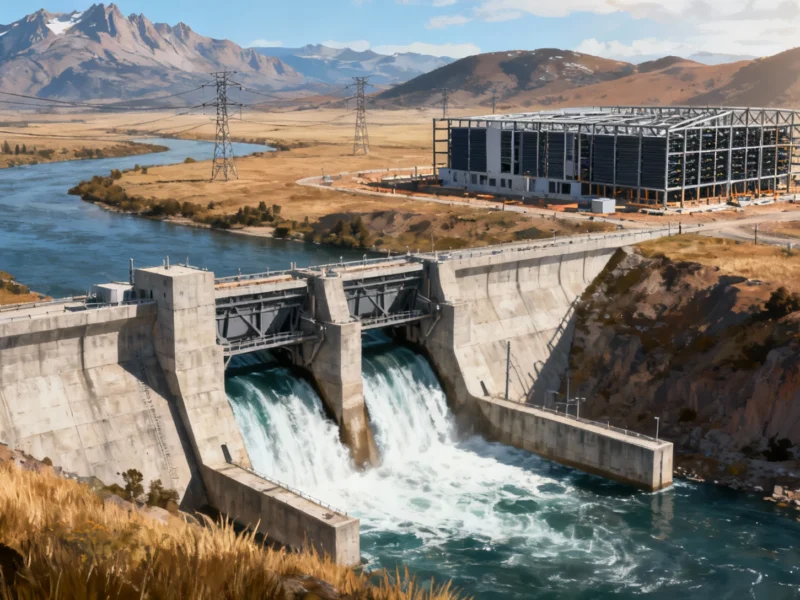The Unlikely Energy Pioneer
While many nations debate climate targets and environmental commitments, Uruguay quietly engineered one of the most successful energy transitions in modern history. This small South American country achieved what many wealthier nations still consider unattainable: a nearly 100% renewable electricity grid that costs half what fossil fuels would. The architect of this transformation, physicist Ramón Méndez Galain, insists the blueprint works anywhere—if governments have the courage to rewrite the rules.
From Energy Crisis to Economic Opportunity
When Méndez Galain first examined Uruguay’s energy system in the mid-2000s, the country faced a perfect storm. Electricity demand was growing rapidly, domestic fossil fuel resources were virtually nonexistent, and dependence on imported oil and gas was becoming increasingly expensive. Hydropower had already been maximized, and blackouts were becoming common in both industrial and residential sectors. The situation mirrored challenges faced by many developing nations today.
What happened next defied conventional wisdom. Rather than focusing primarily on environmental benefits, Uruguay’s leadership prioritized economic logic. “We didn’t start with climate targets,” Méndez Galain explains. “We started with the problem of cost and reliability. The environment was a positive side effect, not the reason.” This pragmatic approach proved crucial to building broad political and public support.
The Three-Pillar Strategy
Uruguay’s transformation rested on three strategic pillars that created a virtuous cycle of investment and innovation:
- Regulatory Reform: The government eliminated longstanding subsidies for fossil fuels and introduced long-term contracts for renewable projects, providing investors with predictable returns.
- Competitive Auctions: Transparent auctions for wind and solar projects fostered intense competition, driving down prices while ensuring quality.
- Resource Diversification: Rather than relying on a single renewable source, Uruguay built a diversified portfolio including wind (35%), hydro (45%), biomass (15%), and solar to fill the gaps.
This comprehensive approach to economic strategy demonstrates how systemic thinking can transform entire sectors. The results speak for themselves: electricity production costs decreased by approximately 50%, while the country attracted $6 billion in renewable energy investments over five years—equivalent to 12% of its GDP.
Economic Benefits Beyond Electricity
The ripple effects of Uruguay’s energy transformation extended far beyond the power sector. Approximately 50,000 new jobs were created in construction, engineering, and operations—representing roughly 3% of the country’s workforce. Meanwhile, customers now pay at least 20% less for electricity than before the transition, freeing up household income and boosting economic activity.
Perhaps most significantly, Uruguay insulated its economy from global fossil fuel price shocks. While other nations grapple with energy-driven inflation, Uruguay enjoys stable, predictable energy costs. The government now has more funds available for education and public services, contributing to a dramatic reduction in poverty from 30% to 8% alongside annual economic growth of 6-8%.
These remarkable outcomes highlight how strategic policy can drive related innovations across multiple sectors, creating virtuous cycles of investment and development.
Addressing the Scalability Question
Critics often argue that Uruguay’s success stems from unique advantages: small size, political stability, and modest electricity demand compared to industrial giants. Some energy analysts worry that replicating the model in countries with higher demand could require costly transmission infrastructure upgrades and significantly more storage capacity.
Méndez Galain acknowledges these challenges but maintains the fundamental principles transfer anywhere. “Every country has resources—it’s just a matter of designing the rules to use them efficiently. Larger economies need more planning, yes, but the principle is the same.” He notes that the International Monetary Fund estimates fossil fuels receive $1.3 trillion in direct subsidies worldwide plus $6 trillion in indirect subsidies annually, creating an uneven playing field that stifles renewable adoption globally.
This perspective on market trends reveals how policy distortions, rather than technological limitations, often represent the greatest barrier to clean energy transitions.
Lessons for the World
Uruguay’s experience offers several crucial insights for other nations contemplating their own energy transitions:
- Economics drives adoption: When clean energy becomes cheaper than alternatives, market forces accelerate its deployment.
- Regulatory stability matters: Uruguay maintained its energy strategy across five different administrations, providing the certainty investors require.
- Diversification enhances resilience: A mix of renewable sources provides reliability that single-source systems lack.
- Institutional strength enables transformation: “The key is not technology; it is institutions,” Méndez Galain emphasizes.
These principles have inspired interest across Latin America and beyond, with delegations from Mexico, Chile, and South Africa studying Uruguay’s model. International finance institutions now view the country as a low-risk demonstration that renewables can be bankable at scale.
The ongoing industry developments in energy transition strategies worldwide continue to validate Uruguay’s approach, proving that economic logic often provides the most compelling case for change.
The Political Will Challenge
Ultimately, Uruguay’s story highlights that the primary barriers to renewable energy adoption are political, not technical or economic. “The question is not whether renewables can work,” Méndez Galain states. “The question is whether governments have the courage to change the rules. If they do, the rest is straightforward.”
This requires confronting entrenched interests that benefit from the status quo. As Méndez Galain observes, “When we eliminate the strong biases that favor fossil fuels, renewables emerge as the clear winner.” The challenge lies in overcoming the political inertia that maintains these biases, often fueled by what he diplomatically calls “self-interest and money.”
The global conversation around recent technology implementation often overlooks this crucial political dimension, focusing instead on technical specifications or cost curves.
Conclusion: A Replicable Blueprint
Uruguay demonstrates that energy transformation begins with rethinking fundamental assumptions about how markets should work. By prioritizing economic benefits, ensuring regulatory stability, and leveraging domestic resources, the country created a system that outperforms fossil fuels on cost, reliability, and job creation. The environmental benefits, while significant, emerged as valuable bonuses rather than primary motivations.
For policymakers worldwide, Uruguay’s experience offers both inspiration and a practical roadmap. The technology exists, the economic case is proven, and the implementation model has been tested. As Méndez Galain succinctly puts it: “If you get the incentives right, the market will do the rest. You don’t need miracles, you need rules that make economic sense.” The world overlooks this lesson at its own economic and environmental peril.
This article aggregates information from publicly available sources. All trademarks and copyrights belong to their respective owners.
Note: Featured image is for illustrative purposes only and does not represent any specific product, service, or entity mentioned in this article.



